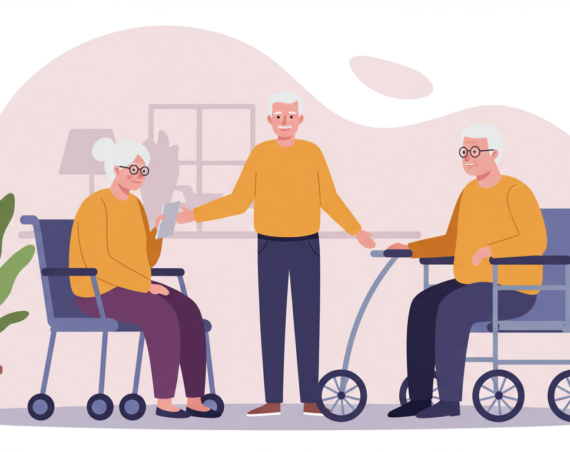
In the United States, after skin cancer, breast cancer is the most prevalent medical data in women. It affects both men and women, but it affects women much more frequently. Breast cancer awareness has resulted in significant advancements in diagnosis and treatment. As a result, the number of people dying from the disease has decreased dramatically, while survival rates have increased.
What Are The Symptoms Of Breast Cancer?
Breast cancer symptoms vary from person to person. Surprisingly, some people don’t show any symptoms at all. Some of the symptoms may be caused by non-cancerous conditions. The following are the most common signs and symptoms:
- Breast cancer irritation or dimpling
- Other than breast milk, nipple discharge includes milk
- Breast pain in any location
- Swelling or thickening of a part of the breast
- A new lump in the breast or underarm is a sign that something is wrong
- Breast pulling in or pain in the nipple are
- Any change in breast size or shape is a cause for concern.
7 Interesting Facts About Breast Cancer
Some organizations started selling pink ribbons to support the cause to raise awareness of breast cancer facts. The now-ubiquitous pink ribbon serves as a sign of support for breast cancer awareness and a memorial to those who have died from the disease. Aside from the pink ribbon fact, there are a few other intriguing breast cancer theories that you probably didn’t know about, such as:
1. Breast cancer has been nicknamed “nun’s disease”
Like most women who have never had children, Nuns have a higher risk of developing breast cancer than mothers. The number of menstrual cycles a woman goes through increases her risk of developing these cancers.
2. Wasp venom is used as a breast cancer treatment
When cells and wasp venom interact in the lab, scientists found that the venom disrupts the cell’s energy-producing process and causes gaping holes in the cell membrane. The cell finally dies as everything inside it oozes out. In short, Mitoparan, a peptide found in wasp venom, can destroy cancer cells.
3. Men and under-aged women get breast cancer too
True, becoming a woman and getting older are the two most important risk factors for breast cancer. In 2007, invasive breast cancer was found in about 4% of women under the age of 40, 23% of women in their 50s, and 27% of women in their 60s and 70s. While 4% may appear insignificant, it is not insignificant. Men are more likely than women to develop breast cancer, but it does occur. Only about 1% of all breast tumors diagnosed in the United States are in men.
4. Breast cancer in the left breast is more common
According to numerous studies, unilateral breast cancer is more common in the left breast than in the right. In the Icelandic Cancer Registry, this has been looked into. Furthermore, the left breast is slightly more affected by breast cancer than the right.
5. Contrary to popular belief, genetics plays a minor role in breast cancer
Genetics is often blamed when a woman is diagnosed with breast cancer. The majority of breast cancers, on the other hand, occur in women who have no family history of the disease or who have no apparent genetic risk. Only about 5% to 10% of all breast cancers are thought to be hereditary.
6. Breast cancer can be more than a lamp
The most common symptom of breast cancer is a lump in the breast, but it is not the only one. Symptoms are discovered independently by women. That’s why it’s crucial to be aware of how your breasts usually appear and feel. Other symptoms that have spread to the lymph nodes and are not limited to the breast can be found. Swelling around the collarbone occurs before the original breast tumor is large enough to feel.
7. There are three most common types of breast cancers
Breast cancer comes in a variety of forms. However, the following three types of breast cancer are the most common, accounting for roughly 75% of all breast cancers:
- IDC (Invasive Ductal Carcinoma) is a type of cancer that starts in the milk ducts and spreads to the surrounding breast tissue. It accounts for about 80% of all invasive breast cancer diagnoses.
- DCIS (Ductal Carcinoma In Situ) is a non-invasive or pre-invasive cancer that can spread to other parts of the body and is found in 1 to 5 percent of breast cancer cases.
- ILC (Invasive Lobular Carcinoma) is a type of cancer that begins in the lobules and has a higher risk of spreading to other parts of the body.
When you’re dealing with breast cancer, the most important thing is to stay alive, so it’s critical to be proactive with your therapy. You may be so nervous and flustered that you forget to ask your doctor the right questions. However, now that you’ve read the above, you’re a better-informed patient who knows what to expect.




